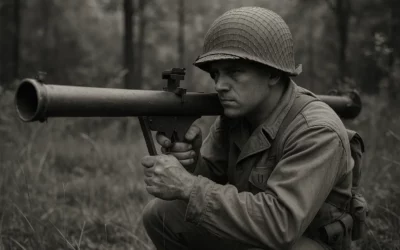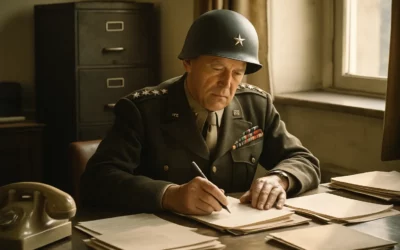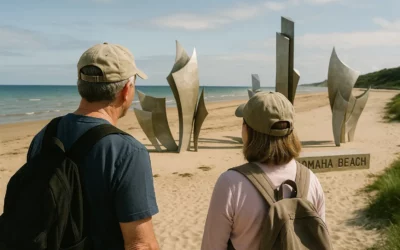It’s a question still asked more than five decades after America’s most decorated World War II soldier vanished in Appalachian cloud cover. On 28 May 1971, the 45‑year‑old hero, Hollywood actor, and veterans’ advocate boarded a twin‑engine Aero Commander 680E for a short business flight from Atlanta to Martinsville. Minutes from his destination, and shrouded in rain, fog, and zero visibility, the aircraft slammed into Brush Mountain, Virginia, killing everyone on board.
This guide walks you through the flight timeline, official investigation, and persistent myths, then shows you where and how you can respectfully visit the sites that honor his legacy. By the end, you’ll not only know the hard facts but also understand why Murphy’s final chapter still resonates with travelers, historians, and veterans alike.
The Legacy That Preceded the Tragedy
Before addressing the crash itself, we need to appreciate Audie Murphy the soldier. Rising from Texas share‑cropper roots, he lied about his age to enlist and amassed a combat record that still astonishes military historians. Earning the Medal of Honor at just nineteen for single‑handedly holding off German troops in France, Murphy embodied raw bravery. After the war, he starred in films like To Hell and Back, a portrayal of his own memoir. This unmatched public profile explains why news of his death ricocheted across newspapers worldwide within hours.
The Final Flight: 28 May 1971 Timeline
At 12:08 p.m. Eastern Time, a chartered Aero Commander 680E (tail number N601JJ) departed Atlanta for Martinsville, Virginia. The weather forecast called for low clouds and patchy rain, conditions requiring an instrument‑rated pilot. Unfortunately, the pilot held only a private license without an instrument rating.
Witnesses later saw the aircraft skimming ridgelines near Brush Mountain, northwest of Roanoke. Moments later, it disappeared into fog and slammed into the 3,056‑foot ridge, roughly 400 feet below the summit. The wreck burned; all six people aboard, including Murphy, died instantly.
Official Findings vs. Popular Myths
| Point of Debate | NTSB Report | Persistent Myth |
| Primary Cause | Pilot continued VFR into instrument weather, lost situational awareness. | Engine failure caused forced descent. |
| Pilot Experience | ≈8,000 flight hours but no instrument rating. | Pilot was fully qualified for IFR. |
| Weather | Low clouds, fog, rain, zero visibility on ridgelines. | Sudden thunderstorm knocked aircraft down. |
| Mechanical Issues | No pre‑impact failure found. | Left engine caught fire mid‑air. |
Inside the Crash Investigation
Investigators reached the remote site three days later due to rugged terrain. They recovered the engines, propellers, and flight controls, confirming both engines produced power at impact. No one aboard had attempted to radio distress.
In 1971, cockpits lacked modern terrain‑avoidance systems, so the pilot relied on visual cues he could not see. The limited wreckage spread pointed to a classic controlled flight into terrain. The National Transportation Safety Board published its final report in December 1971, citing pilot error aggravated by adverse weather.
Where You Can Pay Your Respects
- Brush Mountain Memorial: A modest stone monument stands near the impact point. A well‑marked 0.7‑mile spur off the Appalachian Trail leads there. Wear sturdy shoes and prepare for steep, rocky footing.
- Arlington National Cemetery: Murphy rests in Section 46. His headstone, the second‑most visited after President Kennedy’s, bears his Medal of Honor crest. Arrive early to avoid crowds and allow time for reflection.
Quick Facts at a Glance
- Date of Crash: 28 May 1971
- Aircraft: Aero Commander 680E
- Location: Brush Mountain, Virginia, USA
- Age at Death: 45 years
- Burial Site: Arlington National Cemetery, Section 46
Lessons for Modern Aviators and Travellers
Private aviation has advanced dramatically since 1971, but Murphy’s accident still offers cautionary lessons.
- Ensure your pilot has the right instrument ratings for the expected weather.
- Respect personal minimums for altitude, fuel, and visibility.
- As a traveler, choose operators who publicize safety audits.
By applying these lessons, you help prevent history from repeating itself.
FAQ: Audie Murphy and His Legacy
- Was Audie Murphy the most decorated soldier of WWII?
Yes; he earned 33 U.S. and foreign awards, including every U.S. valor medal. - Did he suffer from PTSD?
Murphy spoke publicly about “battle fatigue,” urging research into veterans’ mental health decades before PTSD was officially recognized. - Can you visit the Brush Mountain crash site?
Yes, via a short but steep trail off the Appalachian Trail near New Castle, VA. Respect the solemn atmosphere and leave no trace. - What films did he star in?
Beyond To Hell and Back, Murphy appeared in over 40 westerns, including Red Badge of Courage and No Name on the Bullet.
Murphy’s Advocacy for Fellow Veterans
Long before PTSD had a clinical name, Murphy spoke openly about nightmares and hyper-vigilance after the war. He used media appearances to urge the U.S. government to acknowledge the psychological wounds of combat.
His efforts helped pave the way for modern veteran counseling programs. As we study his fatal flight, it’s worth remembering that Murphy’s final years were dedicated to helping fellow soldiers with invisible scars. His empathy gives deeper meaning to the memorials that honor him.
Why His Story Still Matters to You
Audie Murphy’s death in a lonely Blue Ridge cloudbank reminds us that even legendary courage can’t defy poor judgment or harsh weather. But every visit to his Arlington grave or the Brush Mountain marker shows how heroism echoes far beyond the battlefield.
By weighing official crash data against myths, we’ve learned how a single decision, flying visually into instrument conditions, can change history. But more importantly, we rediscover Murphy’s postwar mission: advocating mental-health care for returning service members.
Whether you’re researching the crash, planning a memorial visit, or seeking inspiration, let Murphy’s life and tragic end encourage safer travel and deeper respect for those who serve.






